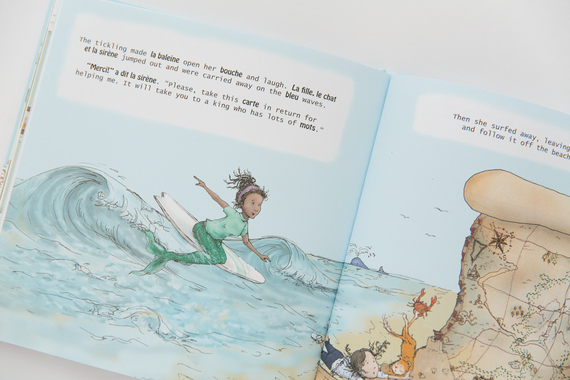Anthony Burgess’ iconic novel A Clockwork Orange isn’t the first place you’d imagine publishers to take inspiration for a children’s book. But this is exactly where we found the initial inspiration for our children’s book series, with the aim of fostering a love for foreign languages in children.
In A Clockwork Orange, words from the fictional Nadsat language are gradually introduced to the reader throughout the narrative, to the point where if you pick up the book and open it on the final page, you’ll barely be able to understand the novel. This is the methodology that along with my co-founder, Jonny Pryn, we have now adopted in our books and have coined the Clockwork Methodology. All of our stories begin entirely in English, before progressively bringing in foreign words in context with the story.
An example of the Clockwork Methodology in action is: “The little boy looked into the sky at the bright, round, yellow soleil.”
The new word gets used many times throughout the story in different contexts and through this repeated exposure the reader has learnt the French word for ‘sun’. Introducing new vocabulary in this way allows us to create stories that start in English and end in a different language.
When kids are listening or reading generally, they often hear new words that they don’t understand. But when they come across them in ‘intelligible contexts’, they’re able to come
up with a theory about what the word means. They might get this a little bit wrong at first but that’s okay. In fact, making mistakes is a key part of learning a language. But as a child is exposed to the word in multiple and varied contexts, they’ll develop their understanding of what it means, be able to recall it faster and soon be able to use it in their own speech and writing.
The inspiration for this methodology may seem odd or controversial due to the nature of the original novel, but we’ve found it to be an incredibly effective way for children to learn languages, as well as enjoyable. Mixing languages may also seem strange, but it’s not uncommon amongst bilingual people. It’s called code switching and studies have shown that exposing children to it can actually have cognitive benefits as they develop strategies to process all that input.
Alongside the inspiration from A Clockwork Orange, the concept was also born from our contrasting experiences in learning foreign languages. I grew up bilingual, speaking English and Spanish in Paraguay and went on to since learn a few more languages, whereas Jonny grew up resenting his weekly French lessons. At school, the seeds of One Third Stories were sown as we took part in a Young Enterprise project, in which we published our very first story about a penguin who travelled the world, and learnt about foreign languages and cultures.
We decided to revisit this concept in 2015 whilst we were still at university and developed the Clockwork Methodology with the help of the Spanish Embassy, dozens of teachers and hundreds of parents and children.
We want One Third Stories to help ensure children’s first experiences of foreign languages are positive, by helping them learn as a consequence of enjoying something as fun as a bedtime story.
